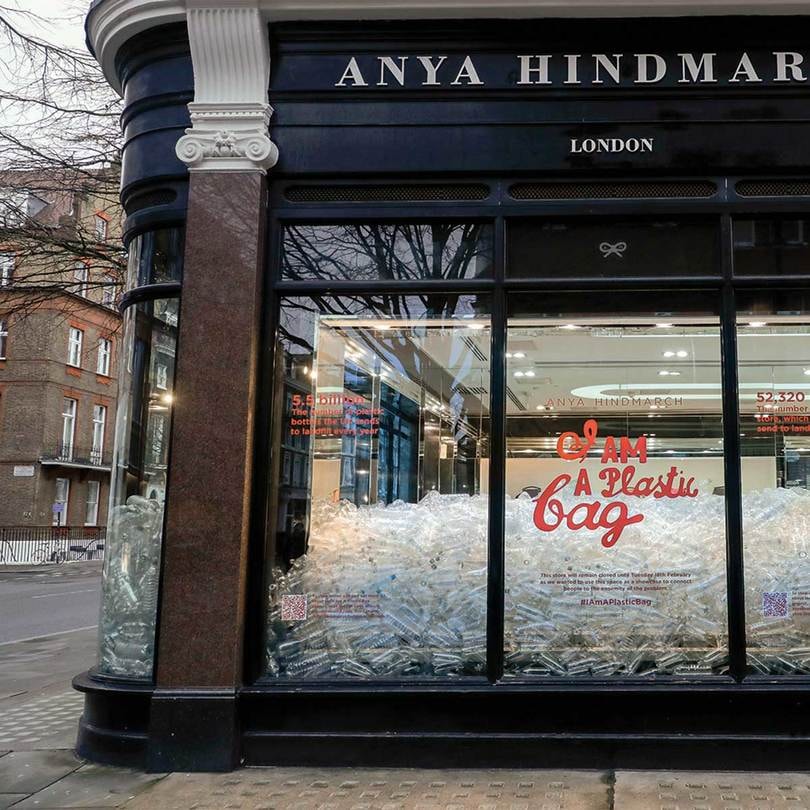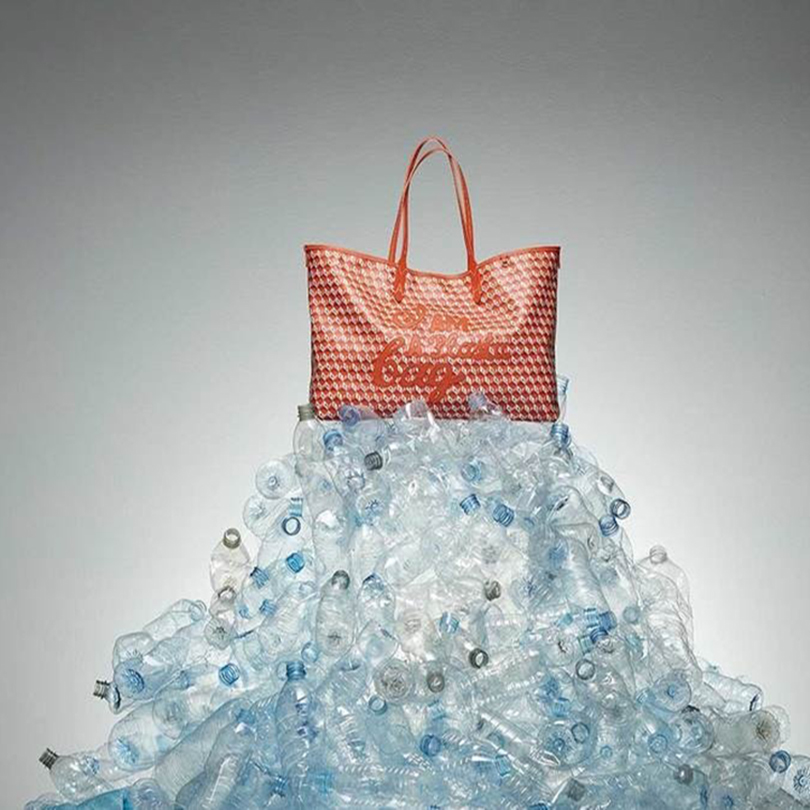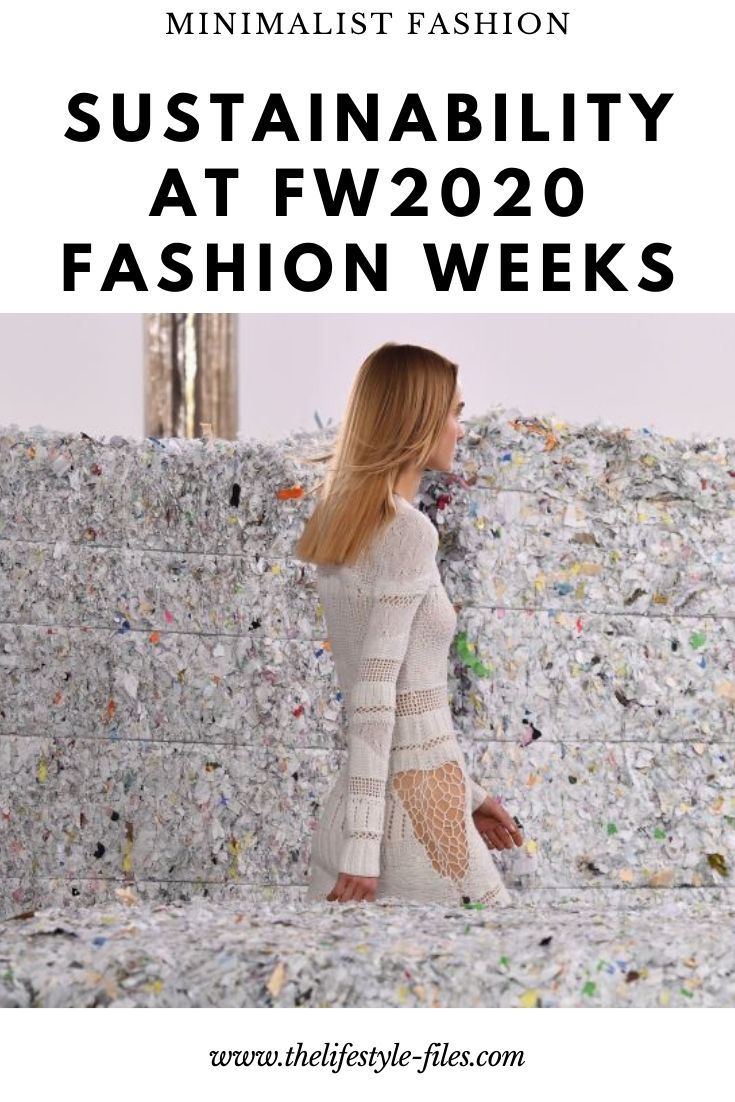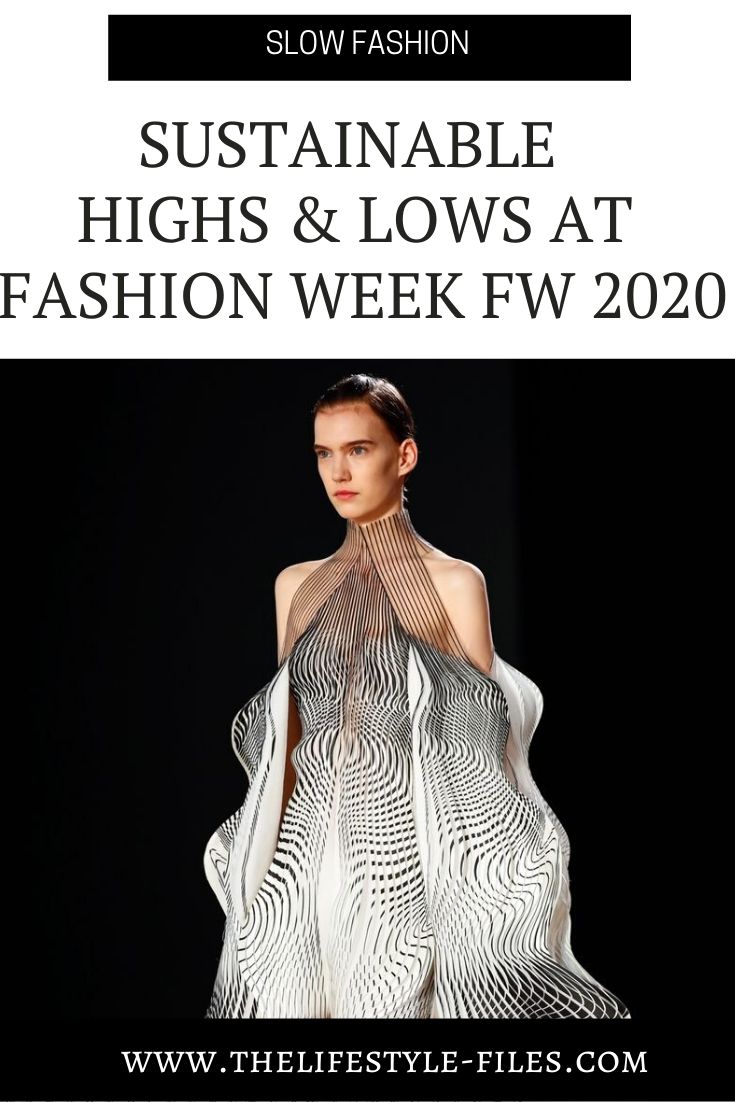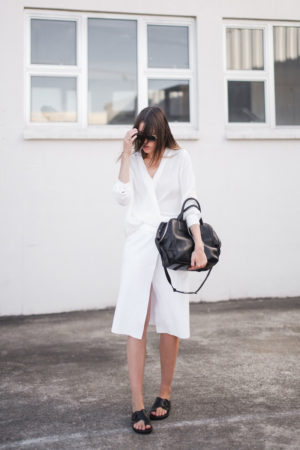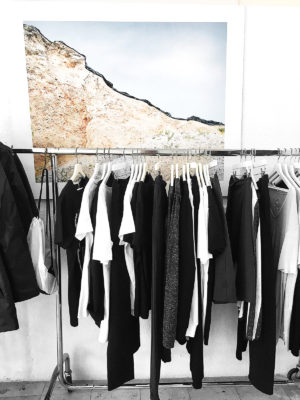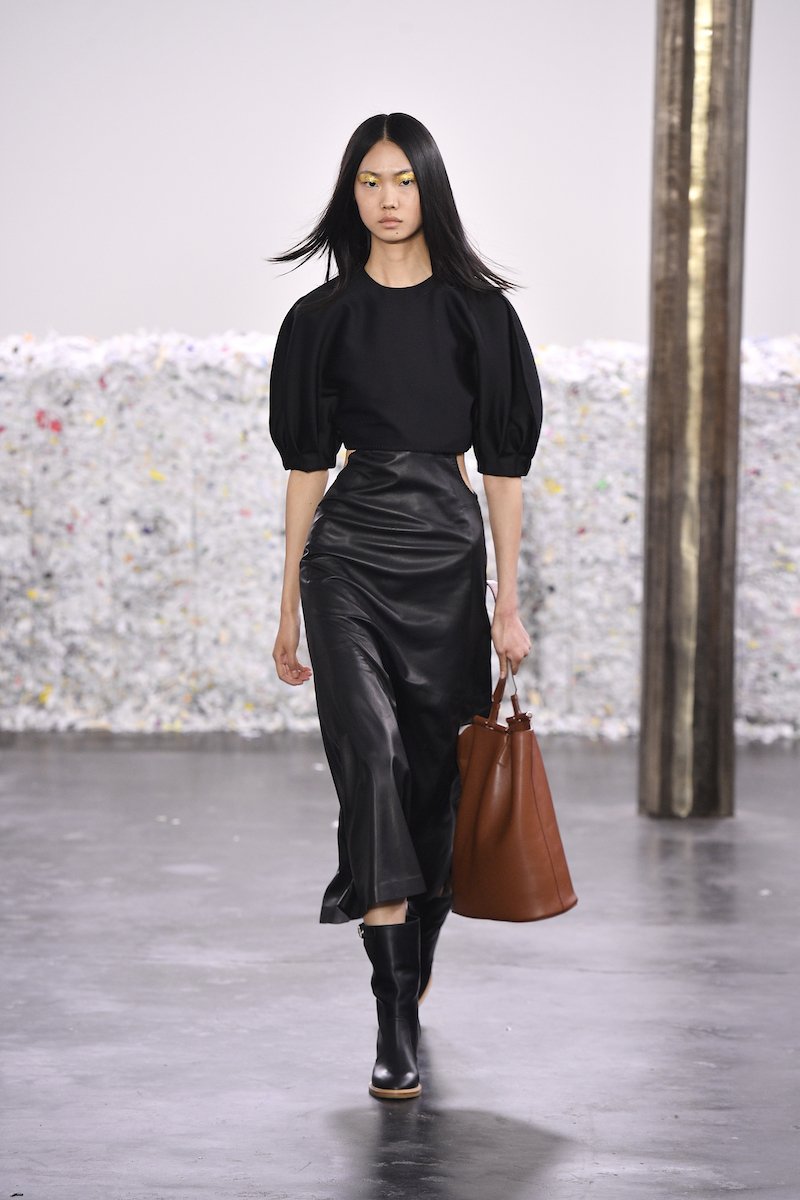
March 3 was the last day of one of the most important event series of the fashion industry – the Fall/Winter Fashion Weeks.
FW 2020 began in Paris with Haute Couture Week, continued in Copenhagen, New York, London, Milan and came full circle once again in Paris at the beginning of March. It included more than 300 shows over 7 weeks and generated thousands of articles, photos, videos, live streams, and social media posts.
So, what did we learn about the state of the fashion industry from this enormous amount of design and content? More precisely – about the ever problematic relationship between fashion and sustainability? Did the fashion houses finally get with the times? Address their collective responsibility in creating and exacerbating the climate crisis? Provide concrete solutions?
Considering the enormous environmental impact and problems of the industry (water, air, and soil pollution, gigantic greenhouse gas emissions, horrible labor conditions, human rights abuses, promotion of excess consumption, overproduction, waste – to name a few) it’s a quite topical issue nowadays.
Did sustainability remain just a convenient PR tool or are we finally seeing fundamental changes?
I’ll list some highlights below – both positive and negative – but I’ll spoiler the final verdict: so far, Fashion Week FW2020 has not solved the industry’s environmental problem. OK, that may have been an unrealistic expectation to begin with, but still, I’d have liked to see some more concrete actions.
I feel like brands are realizing they cannot dodge the question any longer, at least publicly. The pressure is building, and while there are some designers who I think are genuinely trying to change the fashion industry, and there are some positive initiatives, overall, I’m seeing quite lackluster efforts. There’s still no hard facing of responsibilities, still not enough concrete commitments, and very few people talk about the need to not only green the industry but to slow it down altogether.
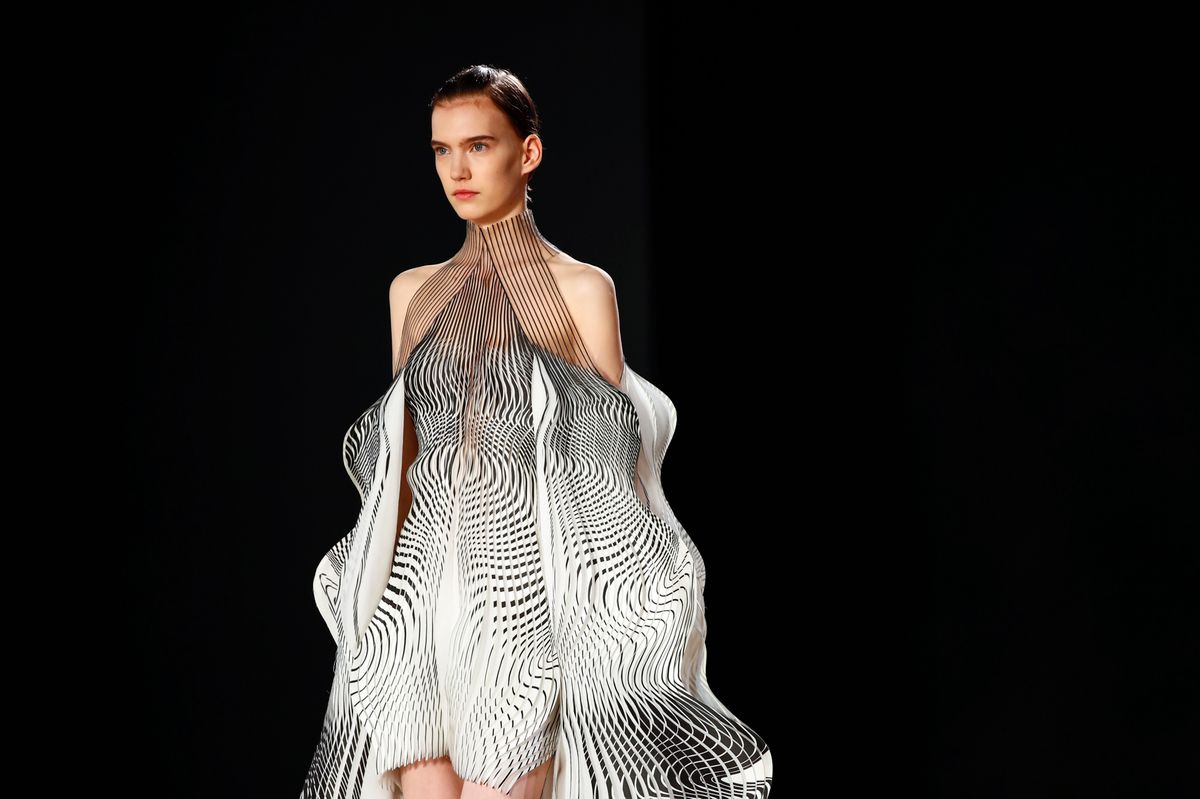
Sustainable couture
In a way, haute couture is uniquely suited to explore the relationship between fashion, creativity, technological innovation, and sustainability as the creations are not mass-produced in a way most of our clothes are. Designers can let their creativity flow and at Haute Couture Week, a lot of them used this opportunity to send a message about the future of sustainable fashion.
Recycling, upcycling, and technological innovations were the key sustainability trends at Paris in January (and continued to dominate the runways later as well).
Jean Paul Gaultier (whose Paris show was his last ever) presented an upcycled haute couture collection using items, designs, fabrics, and materials from the past and reimagining them in a stunningly creative way.
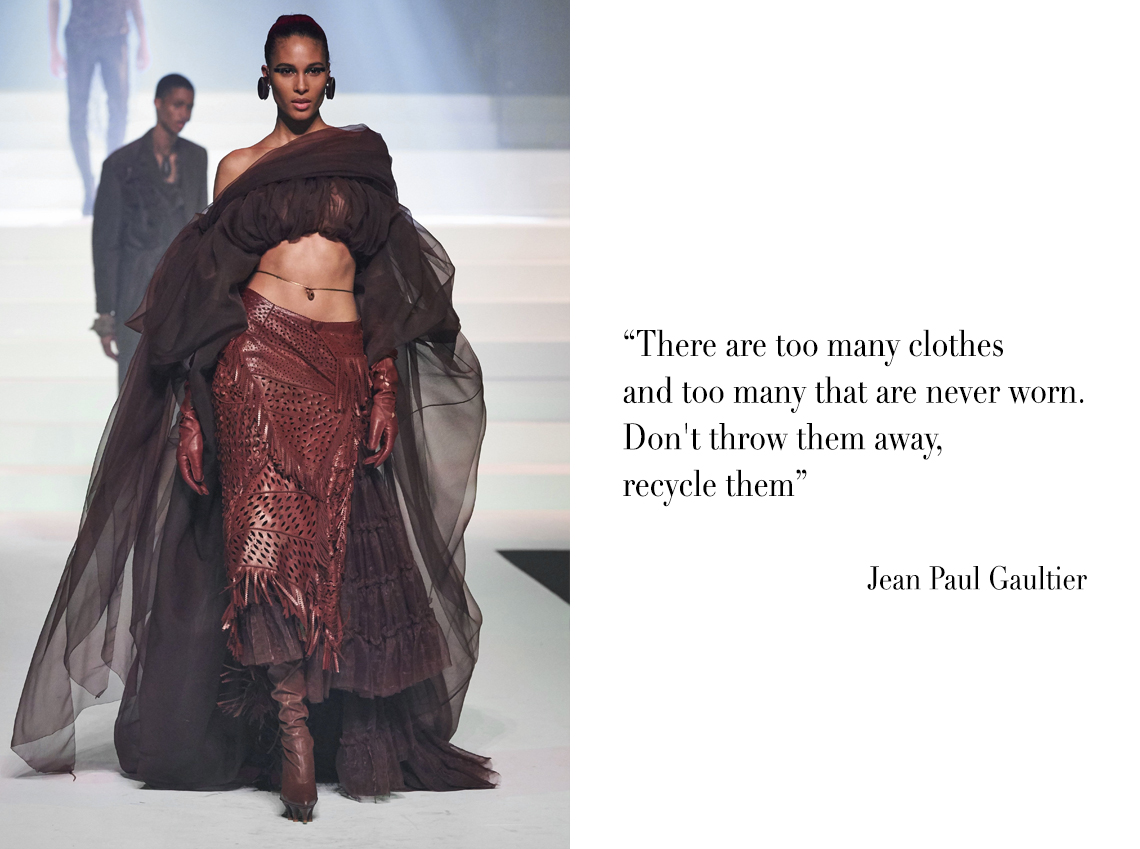
Yuima Nakazato used recycled silk for his clothes, featured jewelry created from glass bottles, and experimented with an innovative new production method (Biosmocking) that minimizes waste when cutting material.
Ronald van der Kemp, one of the most prominent sustainable couture designers who has been working with leftover materials for years, created a collection from recycled vintage clothes, leftover scrap from previous shows, and upcycled fabrics, like samples sent to him by suppliers.
Dutch designer, Iris van Herpen used 3D printing for some of her avant-garde looks.
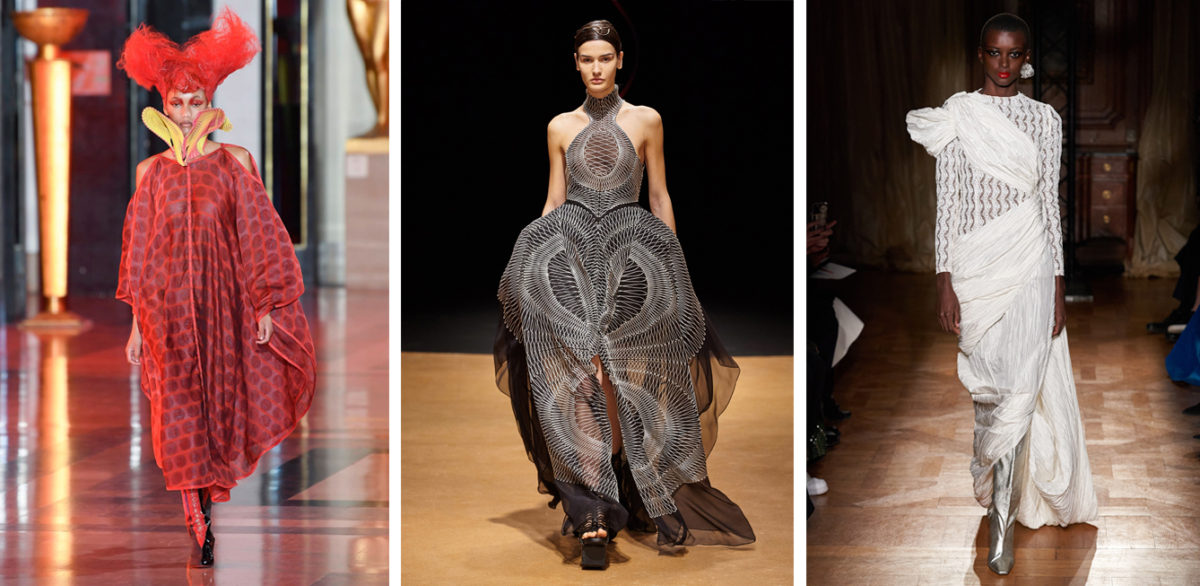
The real question, of course, will be how this translates into everyday and mass fashion. Will leading fashion brands truly take the lead and implement sustainable practices in their operations or will they treat sustainability as just another creative toy?
The fact that the most sustainable achievement of high fashion in the past award season was Joaquin Phoenix wearing the same Stella McCartney suit to all events is not very encouraging, unfortunately, but let’s remain optimistic that next year we’ll see designers competing about who dresses the most stars in sustainably-made gowns.
Copenhagen Fashion Week goes green
In terms of addressing the environmental impact of the actual Fashion Weeks, Copenhagen is leading the way in taking (and enforcing) responsibility. In January 2020, they have unveiled a Sustainability Action Plan 2020 “designed to reinforce the event’s sustainability profile and, more importantly, to push the industry to accelerate its sustainability efforts.”
The plan, which was put together and reviewed by leading sustainability experts and organizations, including Fashion Revolution and the Centre for Sustainable Fashion, has identified some concrete goals for the next three years in 2 main categories – reducing the environmental impact of their own operations and pushing fashion brands to be more sustainable.
Measures meant to reduce the environmental impact of Copenhagen Fashion Week:
- Measure the carbon emissions and use it as a baseline from 2019/20
- Continue to offset the carbon emissions from their own operations for every edition of fashion week (started in 2019)
- Reduce carbon footprint by 50% by 2022
- Explore digital solutions to disseminate shows to a wider audience to minimize carbon emissions from travel
- Use event venues that comply with green energy standards
- Use only electric cars during fashion week
- Ban single-use plastic hangers, garment bags and other types of single-use plastic clothing protectors and materials backstage at show and presentation venues
- Achieve zero waste for Copenhagen Fashion Week’s own activities by 2022
- Provide guidance for show brands to support them in executing zero waste shows, e.g. through seminars, toolkits and/or a list of recommended suppliers
- Develop a code of conducts for suppliers, partners, and sponsors
- Develop and publish annual sustainability reports
Pushing designers to become more sustainable:
From 2023, only brands that prove their sustainability efforts will be able to participate at Copenhagen Fashion Week. To monitor that, the organizers have put together a list of Sustainability Requirements. Brands will have to fulfill two requirements:
- Meet the 17 compulsory minimum standards in the list (e.g. not destroying unsold clothes, using at least 50% organic or recycled textiles in their collections, creating zero waste set designs, not using single-use packaging, etc.)
- Besides the minimum requirements, brands will also have to collect points by fulfilling other concrete sustainability requirements in the list and must achieve a certain score to participate with a show or presentation in the official schedule of Copenhagen Fashion Week.
I really like the initiative and the fact that the goals seem to be quite concrete enough. Hopefully, they will succeed in enforcing them – and other fashion weeks will follow their example.
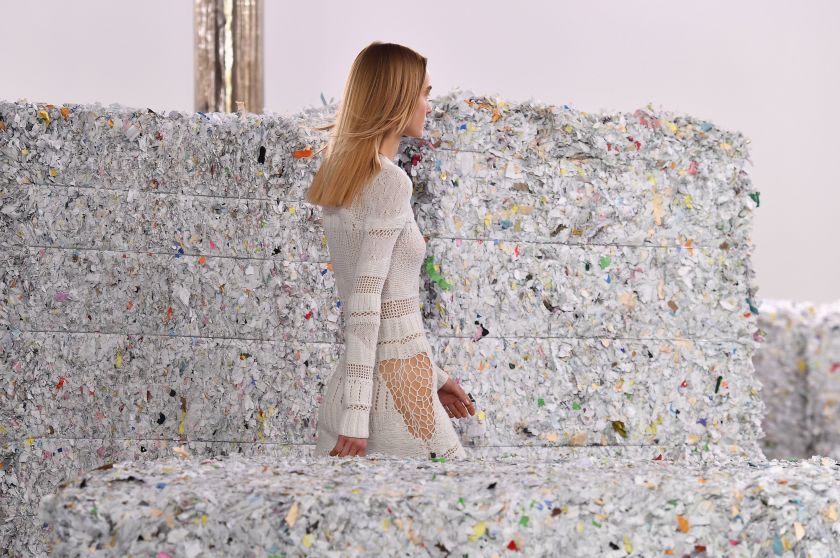
Trending: recycling, upcycling, and waste reduction
Recycling, upcycling, and waste reduction took the central stage on the runways in New York, London, Milan, and Paris as well.
Gabriela Hearst named her FW 2020 collection “Repurpose with Purpose” and it was themed around recycling and upcycling old textiles and materials. She made coats from vintage Turkish rugs, dresses from recycled cashmere, and outerwear and knits by reusing materials and fabrics from last season’s show, highlighting the importance of reinventing existing and excess stock. Waste reduction was manifest in the stage design as well – the models walked around shredded bales of paper.
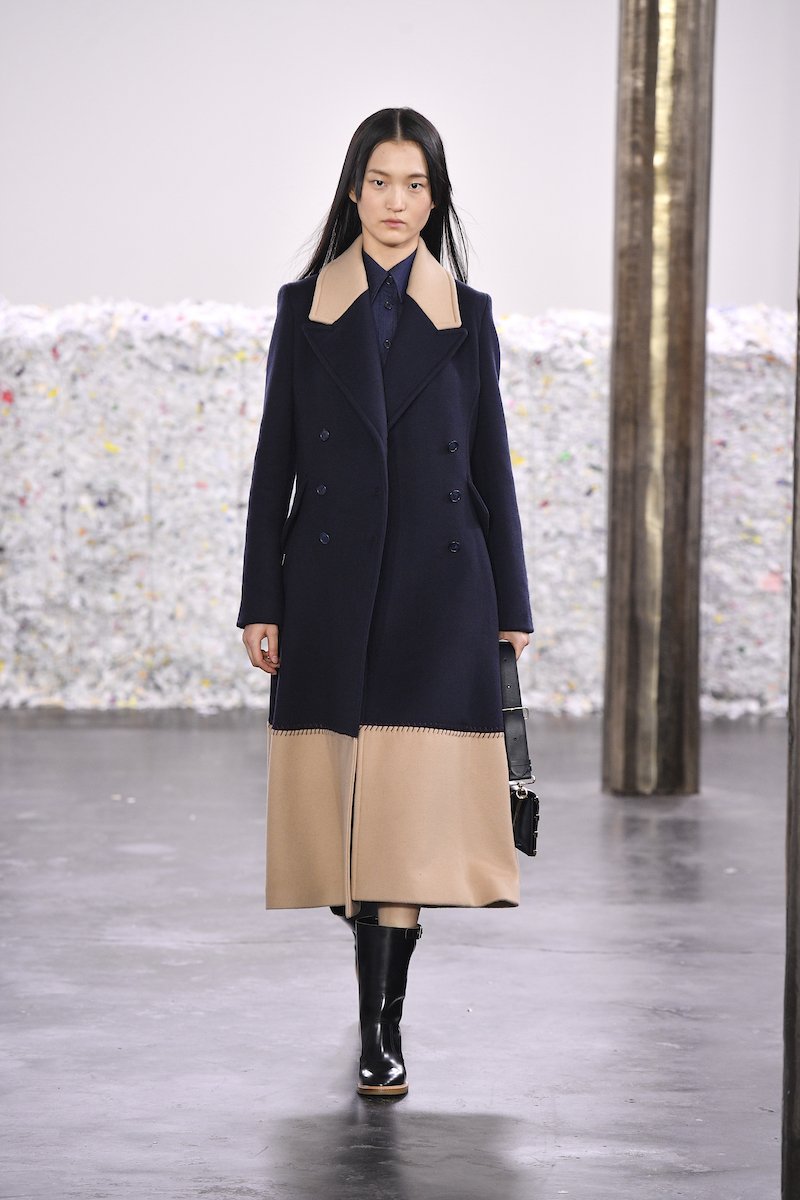
John Galliano also focused on upcycling at Maison Margiela. The collection was built upon founder Martin Margiela’s ‘Replica’ concept – he started to include copies of vintage clothes found all around the world in his collections in the early 1990s. Instead of using replicas, Galliano advanced this idea by selecting items from charity shops and upcycling them into new pieces for the runway.
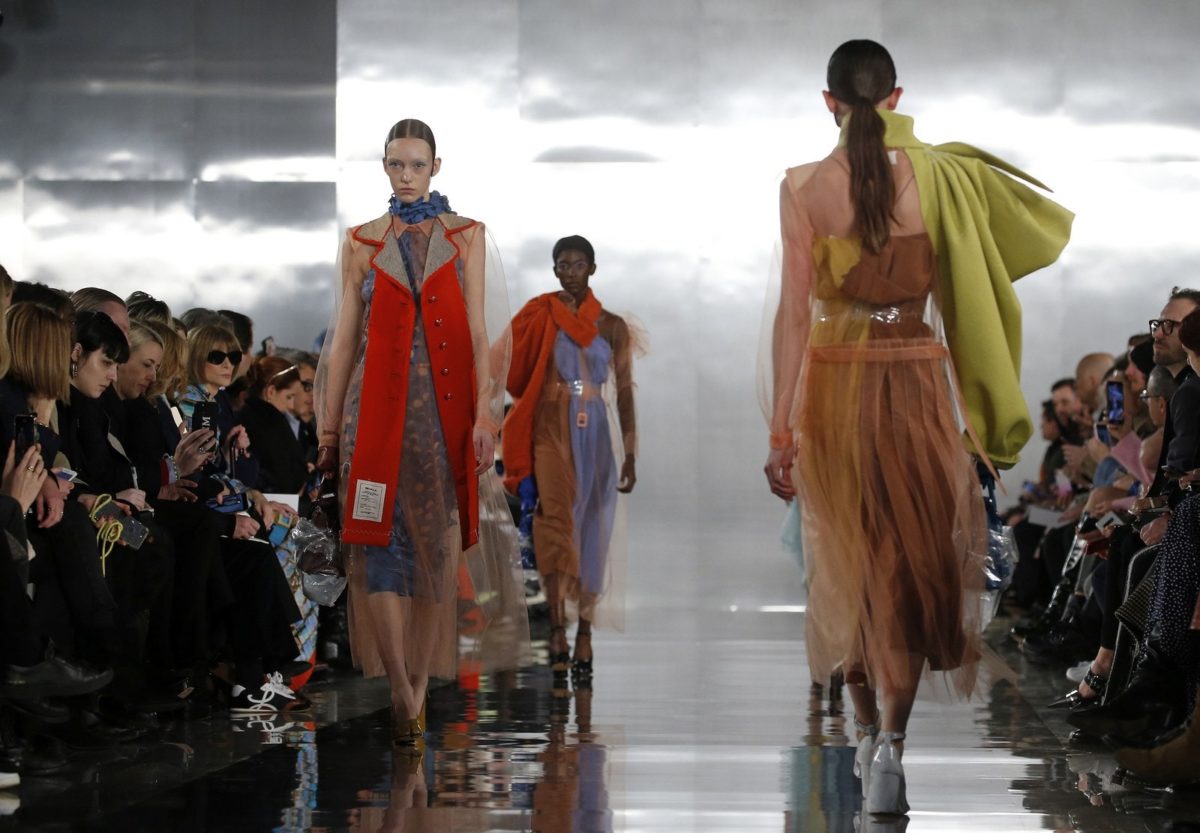
Diesel launched its own Upcycling series called “Diesel Upcycling for”, where they collaborate with different designers to create unique and colorful capsule collections using old prototypes, leftovers, and deadstock materials and fabrics.
Phoebe English asked fellow designers from London to donate studio waste and created her collection out of that.
Eckhaus Latta partnered with The RealReal and used secondhand shoes in their runway show.
In London, Ganni opened a pop-up store for recycled and upcycled clothes and design objects (Ganni Kiosk) and in New York, Goodwill hosted a night of upcycled shopping.
Making a statement
I deliberately choose to be very positive and lenient when I include this one in the positive highlights section.
There were a lot of discussions about sustainability during the fashion weeks, that’s for sure. Roundtables, conferences, industry events, press releases, slogans, and so much more.
And these discussions are important – to a certain degree. We need to make sustainability and the climate crisis the focus of industry discussions. We need to acknowledge the most pressing issues, agree on a path forward, widen the circle of included parties, and listen to experts. But talking is the bare minimum (that frankly, we should have done ages ago). What we desperately need is action – so let’s hold the companies accountable that they follow up on the big words with even bigger practical action steps.
To be fair, some truly valuable workshops and events have also been included in the program – textile waste management and clothing repair workshops, exhibitions of sustainable clothing brands, clothing swap shops, etc.
Some designers have also used the opportunity to make important environmental statements.
Danish sustainable fashion brand Carcel opened Copenhagen Fashion Week in a revolutionary way. This was their first-ever show and they used it to make a statement by not showing a single new piece of clothing. Instead, they made a video presentation about the most important ethical and sustainable issues in the fashion industry and how they are trying to make a change. They have also invited the guests to walk the runway together in the clothes they were already wearing.
Long time sustainable and ethical fashion champion, Stella McCartney posted a series of cartoons on her Instagram page prior to the show with captions like “my coat looks better on me” and “skinning is not winning” and then sent down models dressed as animals as the closing act of her fashion show in Paris, highlighting the fact her designs are fully vegan. She has also vowed to change the world’s biggest luxury fashion group from within after LVMH took a stake in her label and made her the personal sustainable advisor to LMVH owner Bernard Arnault.
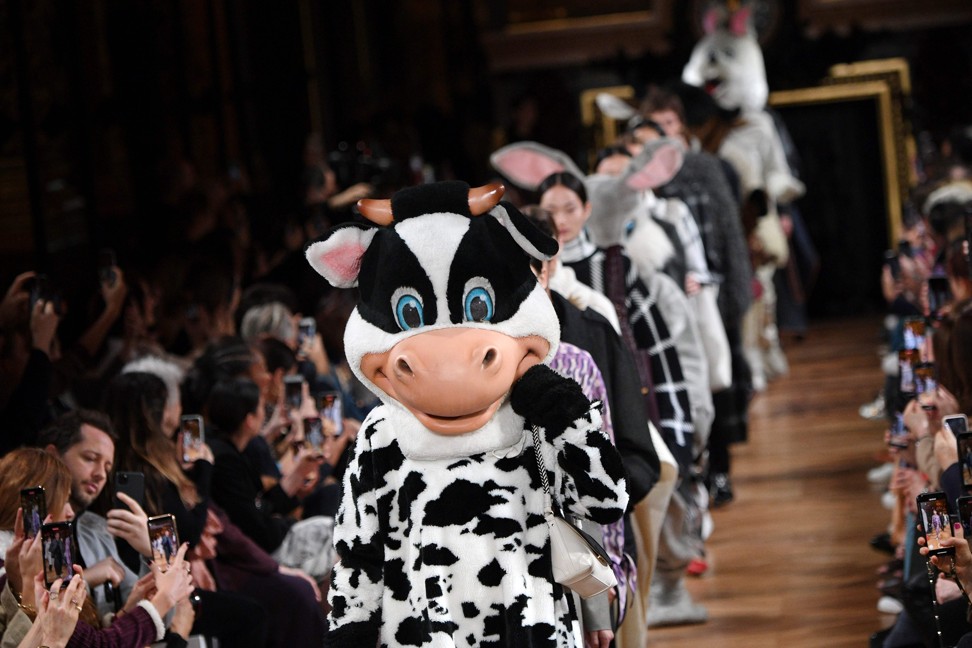
“I choose to believe that I can make change, that I can show them a great example of a different way of doing business.”
Stella McCartney
Anya Hindmarch made headlines with her “I Am A Plastic bag” tote, created from recycled plastic bottles and coated with recycled plastic windshields. The brand has also closed down and filled their central London shop with 90,000 plastic bottles during London FW to make a statement about the waste problem of the fashion industry and the global issue of single-use plastic.
During London Fashion Week, Amy Powey, founder of luxury eco-fashion brad Mother of Pearl launched the #FashionOurFuture campaign, in which everyone can make a pledge that will make their wardrobe and style more sustainable.
Some designers toned down the extravaganza – but they remained the minority
In recent years, many people have questioned the relevance of fashion weeks as the industry has accelerated so much, the whole seasonal show thing doesn’t really make sense anymore. Plus, more and more voices draw attention to the huge environmental impact of the fashion weeks themselves.
In London, Extinction Rebellion called for fashion week to be canceled for good. The New York chapter chose a different approach and while they staged protests as well, they stressed the importance of working with the industry to address the problems together.
Personally, I don’t see fashion week going away anytime soon, but it’d be great to see it transform itself into a more mindful event. Some designers have decided to tone down the extravaganza and experimented with new approaches to showcasing their collections, like pop-up shows and more low-key affairs.
Philip Lim hosted an open-house event instead of a runway show. Rihanna debuted her collection at Bergdorf Goodman with a pop-up store. Patrick McDowell ditched the runway as well and presented his collection as part of a clothes swap event.
Giorgio Armani ditched the public presentation as well, but for an entirely different reason. The coronavirus has reached Milan around the time of the Fashion Week, and that was the main reason why they have decided to livestream the event from an empty theater. But environmental organizations have been recommending using digital technology to showcase collections for years to minimize the travel and environmental impact related to fashion week, and it turns out it can be done.
The bullshit greenwashing tactics live on
Unfortunately, with all the positive initiatives, the fashion industry still hasn’t fully moved beyond greenwashing – bullshit PR tactics are still used at Fashion Week to score some cheap green points instead of addressing the real issues. In London, visitors of the British Fashion Council show space could ask for a free S’well bottle. Another designer produced an ‘ethical’ canvas bag to carry around freebies (basically things no one actually needs), invites (clearly a burden to carry around without a tote), and snacks (probably the free water bottle).
I mean – the impact of traveling across the world to at least 4 cities in the span of a month and putting on flashy shows is clearly offset by a trendy €40 free water bottle and a fashionable tote. Nice priorities.
River Island took a page out of the greenwashing guidebook of H&M and Zara and launched a sustainability challenge for young designers. A rack of supposedly sustainable clothes in one of their shops, which is full of cheaply-made fast fashion clothes just scream bullshit PR tactic for me.
Another thing that falls under greenwashing in my eyes is the constant talk about “creating timeless pieces” in the name of sustainability. I’m a huge fan of slow fashion and buying pieces that we can wear for years (if not decades), but let’s be honest – in a lot of cases, this is just an excuse to sell a simple white shirt for €350. If there’s nothing else behind it, no eco-friendly fabrics, no transparent supply chain, no sustainable production – then it’s just a marketing hack.
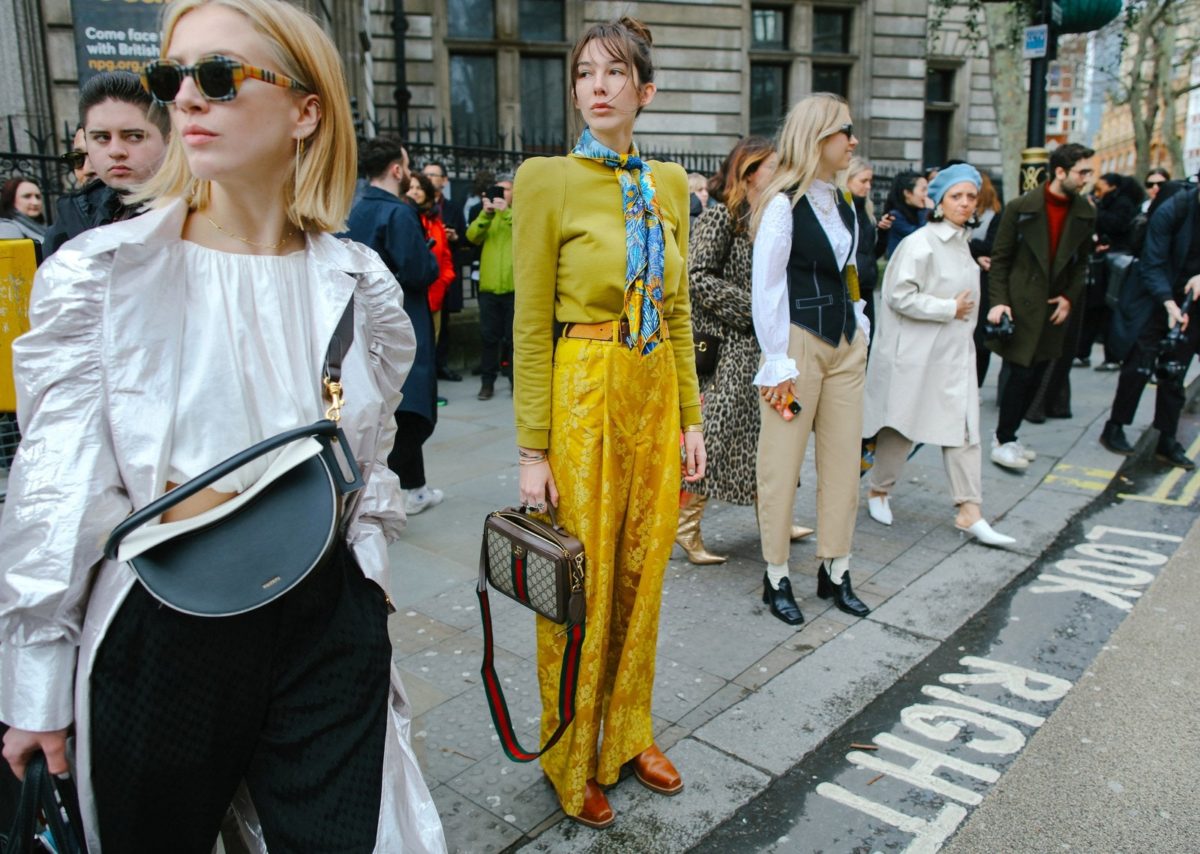
Influencers miss out on the opportunity to advance the sustainability discussion
There are some exceptions, but most of the fashion influencers I follow sadly totally missed out on the opportunity to discuss important fashion-related things. I’ve seen gigantically long Instagram stories basically livestreaming whole fashion shows, artistic photos of exclusive designer parties or private tours, and beautiful #ootds. And don’t get me wrong, the main thing I follow these people for is the aesthetic inspiration. But still, it’d have been great to discuss other aspects of fashion as well. Telling their followers about the issues in the fashion industry. Talking about the step designers make, and steps we, customers, can make. Leading by example and wearing vintage, second-hand – or just even the same items multiple times. It’d be high time for influencers to start taking the “influencing” part of their job a lot more seriously – and start using their force for good.
Too little, too slow (too late?)
So, what’s the verdict?
My biggest problem is, as I said in the beginning of this post, is the overall lack of concrete commitments to fundamental changes. What we need from brands is a complete overhaul of their attitude towards production and creation. They need to address the problems in their factories and supply chains. They need to set very concrete emission goals. They need to pledge not to destroy their unused clothes. They need to create a system for minimizing waste, reducing overproduction, and upcycling leftover fabrics. They need to stop using virgin polyester and start using organic cotton. They need to make sure everyone in their supply chain provides safe working conditions and a living wage to workers and they need to stop blaming suppliers for the problems. They need to invest money in sustainable practices and, yes, they must accept that changes may come with a profit loss, at least in the beginning.
And they need to slow down production and stop encouraging people to shop, shop, and shop. The art and creativity inherent in fashion can still be celebrated, but until fundamental changes are made, the fashion weeks will continue to be the symbols of a deeply unsustainable and unethical industry.

